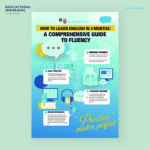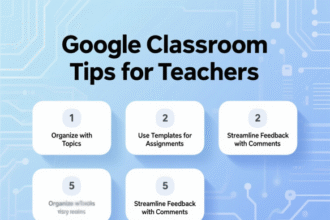The landscape of higher education is undergoing a seismic shift, propelled by the rapid evolution of technology and the growing demand for flexible, accessible learning environments. Virtual classrooms have emerged as a cornerstone of this transformation, redefining how knowledge is delivered and consumed in colleges and universities worldwide. We are witnessing a revolution that transcends geographical boundaries, enhances inclusivity, and empowers students and educators to engage in dynamic, interactive learning experiences. This article explores the future of virtual classrooms in higher education, delving into their technological advancements, pedagogical implications, challenges, and transformative potential.
- The Rise of Virtual Classrooms in Higher Education
- Technological Innovations Driving Virtual Classrooms
- Artificial Intelligence and Personalized Learning
- Virtual Reality and Augmented Reality
- Learning Management Systems and Cloud Integration
- Gamification and Interactive Learning
- Pedagogical Shifts in Virtual Classrooms
- Benefits of Virtual Classrooms in Higher Education
- Challenges Facing Virtual Classrooms
- Digital Divide and Access to Technology
- Student Engagement and Motivation
- Faculty Training and Support
- Academic Integrity and Assessment
- The Role of Policy and Regulation
- Case Studies: Successful Virtual Classroom Implementations
- University of Illinois: Online MBA Program
- Arizona State University: Virtual Reality Labs
- Coursera and edX: Massive Open Online Courses (MOOCs)
- The Future Outlook for Virtual Classrooms
- Recommendations for Institutions Adopting Virtual Classrooms
- FAQs About Virtual Classrooms in Higher Education
The Rise of Virtual Classrooms in Higher Education
The advent of virtual classrooms has reshaped the traditional model of higher education, moving away from the constraints of physical lecture halls to digital platforms that offer unparalleled flexibility. These digital environments leverage advanced technologies such as video conferencing, cloud-based collaboration tools, and artificial intelligence to create immersive learning experiences. We have seen a significant acceleration in their adoption, driven by global events like the COVID-19 pandemic, which forced institutions to pivot to online learning almost overnight.
Virtual classrooms are not merely a stopgap measure but a sustainable solution that addresses the diverse needs of modern learners. They enable students from different corners of the globe to access world-class education without the need to relocate. For instance, a student in rural Africa can enroll in a course offered by a prestigious university in Europe, participating in real-time discussions and accessing course materials seamlessly. This democratization of education is one of the most profound impacts of virtual classrooms, fostering inclusivity and equity in higher education.
Moreover, virtual classrooms cater to non-traditional students, such as working professionals, parents, and individuals with disabilities, who require flexible schedules and accessible learning formats. By offering asynchronous and synchronous learning options, these platforms ensure that education fits into the lives of learners rather than demanding they conform to rigid academic schedules.
Technological Innovations Driving Virtual Classrooms
The future of virtual classrooms in higher education is deeply intertwined with technological innovation. We are witnessing rapid advancements in tools and platforms that enhance the quality and interactivity of online learning. Below, we explore some of the key technologies shaping this future:
Artificial Intelligence and Personalized Learning
Artificial intelligence (AI) is revolutionizing virtual classrooms by enabling personalized learning experiences tailored to individual student needs. AI-driven platforms analyze student performance data, such as quiz scores, participation rates, and learning pace, to provide customized feedback and recommendations. For example, AI can suggest additional resources for a student struggling with calculus or adjust the difficulty level of assignments in real-time.
AI-powered virtual assistants, or chatbots, are also becoming integral to virtual classrooms. These assistants handle routine administrative tasks, such as answering FAQs about course schedules or assignment deadlines, allowing instructors to focus on teaching. Moreover, AI can facilitate adaptive learning paths, ensuring that students receive content that aligns with their skill levels and learning styles. This personalization enhances engagement and improves academic outcomes, making virtual classrooms more effective than ever.
Virtual Reality and Augmented Reality
Virtual reality (VR) and augmented reality (AR) are pushing the boundaries of immersive learning in higher education. VR creates fully simulated environments where students can engage in hands-on learning experiences, such as conducting virtual lab experiments or exploring historical sites. For instance, medical students can practice surgical procedures in a risk-free virtual operating room, while history students can “walk” through ancient civilizations.
AR, on the other hand, overlays digital information onto the real world, enhancing traditional learning materials. Imagine a biology student using an AR app to visualize a 3D model of a human cell on their desk, rotating and dissecting it to understand its components. These technologies make abstract or complex concepts more tangible, fostering deeper comprehension and retention.
Learning Management Systems and Cloud Integration
Modern learning management systems (LMS) like Canvas, Blackboard, and Moodle form the backbone of virtual classrooms. These platforms centralize course materials, assessments, and communication tools, creating a seamless learning ecosystem. We are seeing LMS platforms evolve to incorporate cloud-based storage and collaboration features, allowing students and instructors to access resources from anywhere, anytime.
Cloud integration also enables real-time collaboration, similar to tools like Google Docs or Microsoft Teams. Students can work on group projects, share notes, and receive instant feedback from peers and instructors. This connectivity fosters a sense of community, which is often a challenge in online learning environments.
Gamification and Interactive Learning
Gamification is another trend shaping the future of virtual classrooms in higher education. By incorporating game-like elements such as points, badges, and leaderboards, educators can boost student motivation and engagement. For example, a business course might include a virtual stock market simulation where students compete to build the most profitable portfolio, applying theoretical concepts in a practical setting.
Interactive tools like polls, quizzes, and discussion boards further enhance engagement. These features encourage active participation, which is critical for fostering critical thinking and collaboration in virtual settings. As gamification techniques evolve, we expect to see more sophisticated applications that blend learning with entertainment, making education both effective and enjoyable.
Pedagogical Shifts in Virtual Classrooms
The rise of virtual classrooms is not just a technological phenomenon but also a pedagogical one. We are witnessing a shift from traditional, lecture-based teaching to more student-centered approaches that prioritize active learning and collaboration. Below, we explore how virtual classrooms are reshaping teaching methodologies in higher education.
Flipped Classroom Models
The flipped classroom model is gaining traction in virtual learning environments. In this approach, students engage with lecture materials, such as recorded videos or readings, before class, allowing in-class time to focus on discussions, problem-solving, and hands-on activities. Virtual classrooms facilitate this model by providing easy access to pre-recorded content and interactive tools for live sessions.
For example, a chemistry professor might assign a video lecture on molecular bonding for students to watch asynchronously. During the virtual class, students participate in group discussions or solve problems collaboratively using breakout rooms. This approach maximizes the value of live interactions and encourages students to take ownership of their learning.
Competency-Based Education
Competency-based education (CBE) is another pedagogical shift enabled by virtual classrooms. CBE focuses on students mastering specific skills or competencies at their own pace, rather than adhering to a fixed academic calendar. Virtual platforms support CBE by offering modular courses, self-paced assessments, and detailed progress tracking.
For instance, a student pursuing a degree in computer science might complete a module on Python programming, taking as long as needed to demonstrate mastery. Once they pass the assessment, they move on to the next module. This flexibility is particularly valuable for adult learners who need to balance education with other responsibilities.
Collaborative Learning and Peer Interaction
Collaboration is a cornerstone of effective learning, and virtual classrooms are designed to foster peer interaction. Features like breakout rooms, discussion forums, and collaborative whiteboards enable students to work together on projects, share ideas, and provide feedback. These tools replicate the social aspects of traditional classrooms, creating a sense of community in the digital space.
For example, in a virtual literature course, students might use a discussion board to analyze a novel, responding to each other’s posts and building on their ideas. Such interactions not only deepen understanding but also develop critical soft skills like communication and teamwork, which are highly valued in the workforce.
Benefits of Virtual Classrooms in Higher Education
The adoption of virtual classrooms offers numerous benefits for students, educators, and institutions. We outline some of the most significant advantages below:
-
Accessibility and Inclusivity: Virtual classrooms break down geographical and physical barriers, making education accessible to students who might otherwise be excluded due to location, disability, or financial constraints.
-
Cost-Effectiveness: Online programs often reduce costs associated with commuting, housing, and physical infrastructure, benefiting both students and institutions.
-
Flexibility: Asynchronous learning options allow students to study at their own pace, accommodating diverse schedules and learning preferences.
-
Scalability: Virtual classrooms can accommodate large numbers of students without the need for additional physical space, enabling institutions to expand their reach.
-
Data-Driven Insights: Analytics tools provide educators with detailed insights into student performance, enabling targeted interventions and personalized support.
Challenges Facing Virtual Classrooms
While the future of virtual classrooms in higher education is promising, several challenges must be addressed to ensure their success. We explore these challenges and potential solutions below.
Digital Divide and Access to Technology
The digital divide remains a significant barrier to equitable access to virtual classrooms. Students in underserved communities may lack reliable internet, modern devices, or digital literacy skills. To address this, institutions must invest in initiatives like subsidized internet plans, device loan programs, and digital literacy workshops.
For example, some universities have partnered with telecommunications companies to provide low-cost internet to students in rural areas. Others have established on-campus tech hubs where students can access high-speed internet and modern devices. These efforts are critical for ensuring that all students can participate in virtual learning.
Student Engagement and Motivation
Maintaining student engagement in virtual classrooms can be challenging, particularly in asynchronous settings where direct interaction is limited. To combat this, educators can use interactive tools like live polls, gamified assessments, and virtual office hours to keep students engaged.
Additionally, fostering a sense of community is essential. Institutions can organize virtual events, such as guest lectures or student-led seminars, to build connections among learners. Peer mentoring programs can also provide support and encouragement, helping students stay motivated.
Faculty Training and Support
The shift to virtual classrooms requires educators to adapt to new technologies and teaching methods. Many faculty members may lack the training or confidence to deliver effective online instruction. Institutions must prioritize professional development, offering workshops on virtual pedagogy, LMS navigation, and technology integration.
For instance, a university might offer a certification program for online teaching, covering topics like designing interactive content and managing virtual discussions. Ongoing support, such as dedicated IT helpdesks, is also crucial for addressing technical challenges in real-time.
Academic Integrity and Assessment
Ensuring academic integrity in virtual classrooms is another challenge, as online assessments are more susceptible to cheating. Institutions can address this by using proctoring software, randomized question banks, and project-based assessments that emphasize critical thinking over rote memorization.
For example, instead of a traditional multiple-choice exam, a history course might require students to create a multimedia presentation analyzing primary sources. Such assessments are harder to plagiarize and encourage deeper engagement with the material.
The Role of Policy and Regulation
The future of virtual classrooms in higher education will also be shaped by policy and regulatory frameworks. Governments and accreditation bodies must establish standards for online education to ensure quality and consistency. These standards should address issues like course design, faculty qualifications, and student support services.
We are seeing increased collaboration between institutions and policymakers to create guidelines for virtual learning. For instance, the U.S. Department of Education has issued regulations for distance education, emphasizing the importance of regular and substantive interaction between students and instructors. Similar frameworks are emerging globally, ensuring that virtual classrooms meet rigorous academic standards.
Case Studies: Successful Virtual Classroom Implementations
To illustrate the potential of virtual classrooms, we highlight several real-world examples of institutions that have successfully integrated online learning into their programs.
University of Illinois: Online MBA Program
The University of Illinois offers a fully online MBA program, known as the iMBA, which combines asynchronous coursework with live virtual sessions. The program uses a robust LMS to deliver content, track progress, and facilitate collaboration. Students benefit from flexible scheduling, world-class faculty, and a diverse peer network, demonstrating the scalability and accessibility of virtual classrooms.
Arizona State University: Virtual Reality Labs
Arizona State University has pioneered the use of VR in its biology courses, allowing students to conduct virtual lab experiments. By partnering with tech companies, the university has developed immersive simulations that replicate real-world lab environments. This approach has increased student engagement and provided hands-on learning opportunities for remote learners.
Coursera and edX: Massive Open Online Courses (MOOCs)
Platforms like Coursera and edX have partnered with top universities to offer MOOCs, which are essentially large-scale virtual classrooms. These courses attract millions of learners worldwide, offering high-quality content and interactive features like discussion forums and peer-reviewed assignments. The success of MOOCs highlights the global demand for accessible, flexible education.
The Future Outlook for Virtual Classrooms
Looking ahead, the future of virtual classrooms in higher education is bright, with several trends poised to shape the next decade:
-
Hybrid Learning Models: We expect a rise in hybrid models that combine the best of in-person and virtual learning, offering students flexibility while maintaining the benefits of face-to-face interaction.
-
Global Collaboration: Virtual classrooms will facilitate international partnerships, allowing students to collaborate on projects with peers from different countries and cultures.
-
Lifelong Learning: As the job market evolves, virtual classrooms will support lifelong learning by offering micro-credentials, short courses, and professional development programs.
-
Ethical AI Integration: As AI becomes more prevalent, institutions will need to address ethical concerns, such as data privacy and algorithmic bias, to ensure equitable learning experiences.
Recommendations for Institutions Adopting Virtual Classrooms
To successfully integrate virtual classrooms, we recommend the following strategies for higher education institutions:
-
Invest in Technology Infrastructure: Ensure robust internet connectivity, modern devices, and user-friendly platforms to support seamless virtual learning.
-
Prioritize Faculty Development: Offer comprehensive training programs to equip educators with the skills needed for online teaching.
-
Enhance Student Support Services: Provide virtual counseling, tutoring, and career services to support student success.
-
Foster Community Building: Organize virtual events and peer mentoring programs to create a sense of belonging among online learners.
-
Leverage Data Analytics: Use learning analytics to monitor student progress and provide targeted interventions.
-
Ensure Accessibility: Design courses with universal design principles to accommodate diverse learners, including those with disabilities.
-
Promote Academic Integrity: Implement robust assessment strategies and proctoring tools to maintain fairness and credibility.
FAQs About Virtual Classrooms in Higher Education
-
What are virtual classrooms in higher education?
Virtual classrooms are digital learning environments that enable remote teaching and learning, using tools like video conferencing, LMS platforms, and interactive technologies. -
How do virtual classrooms benefit students?
They offer flexibility, accessibility, cost savings, and personalized learning experiences, catering to diverse student needs. -
What technologies power virtual classrooms?
Technologies include AI, VR, AR, LMS platforms, and cloud-based collaboration tools. -
How do virtual classrooms ensure academic integrity?
Institutions use proctoring software, randomized question banks, and project-based assessments to prevent cheating. -
Can virtual classrooms replicate in-person interactions?
Yes, through features like breakout rooms, discussion forums, and virtual office hours, they foster collaboration and engagement. -
What is the flipped classroom model in virtual learning?
Students engage with lecture materials asynchronously, while live sessions focus on discussions and problem-solving. -
How do virtual classrooms address the digital divide?
Institutions offer subsidized internet, device loans, and digital literacy programs to ensure equitable access. -
What role does AI play in virtual classrooms?
AI personalizes learning, automates administrative tasks, and provides data-driven insights into student performance. -
How can faculty adapt to virtual teaching?
Through professional development programs focused on online pedagogy and technology integration. -
Are virtual classrooms cost-effective for institutions?
Yes, they reduce costs related to physical infrastructure and allow scalability to reach more students. -
What is the future of virtual classrooms?
Trends include hybrid models, global collaboration, lifelong learning, and ethical AI integration. -
How do virtual classrooms support non-traditional students?
They offer flexible schedules and asynchronous learning, accommodating working professionals and parents. -
Can VR and AR enhance virtual classrooms?
Yes, they create immersive experiences, such as virtual labs and interactive simulations, enhancing understanding. -
What challenges do virtual classrooms face?
Challenges include the digital divide, student engagement, faculty training, and academic integrity. -
How can institutions improve virtual classroom experiences?
By investing in technology, training faculty, enhancing support services, and fostering community.




















